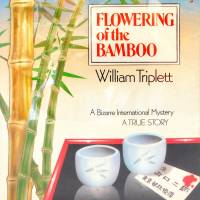The acronym GUBU (grotesque, unusual, bizarre and unprecedented) fits the mass murder at the Teihoku Bank in Tokyo on Jan. 26, 1948. Sixteen people were deliberately poisoned, including an 8-year-old boy. More money was left behind than stolen.
Flowering of the Bamboo, by William Triplett.
263 pages
WOODBINE HOUSE, Nonfiction.
While the incident has long been pored over in Japan, Triplett's book was one of the first to explore the explosive case in English when it was published in 1985. Triplett, a journalist and playwright, stumbled on the case upon hearing about Sadamichi Hirasawa, a painter who was convicted of the murders and sentenced, but never executed. He lived out his life on death row. Hirasawa's conviction was widely disputed.
Triplett examines the case from two perspectives: Hirasawa's and that of Unit 731, the Imperial Army's secretive Biological Warfare outfit, which had been operational during World War II and had ties to the case.
Besides the forensics of the crime Triplett's book portrays just how much Japan was in flux in the immediate aftermath of the war: The Americans were trying to pull Japan's institutions out of a deeply ingrained feudalistic culture, the police wanted to get someone on the hook quickly, and the press didn't exactly cover themselves in glory while trying to convict Hirasawa in the court of public opinion. A compelling read, even if it unearths more questions than it answers.
Read archived reviews of Japanese classics at jtimes.jp/essential.



